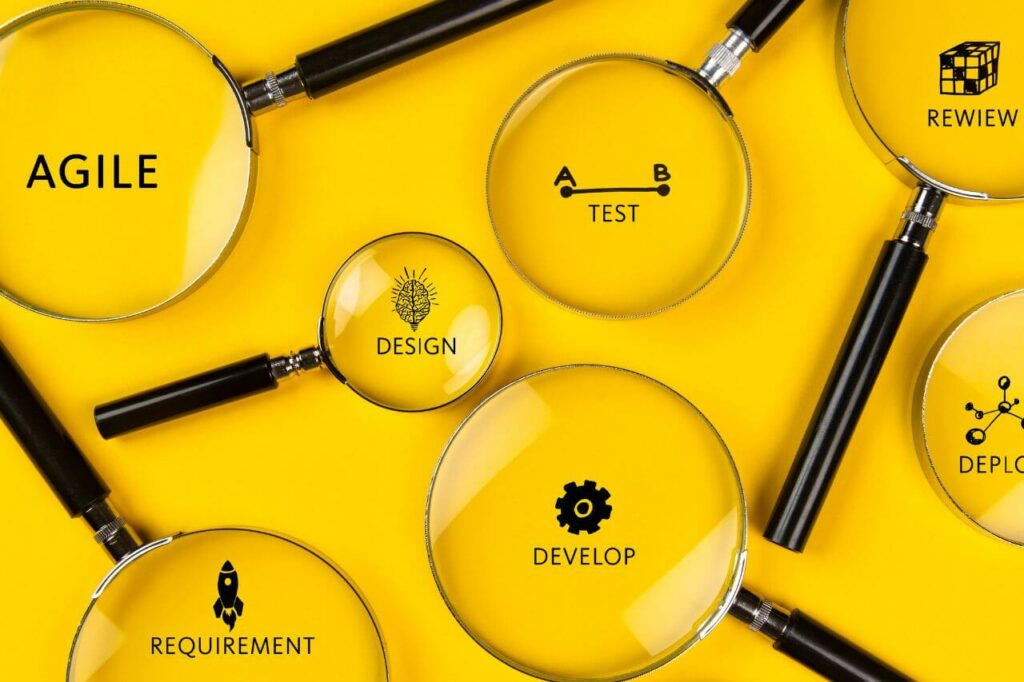If you’ve ever woken up and decided to remodel your kitchen or say plan your wedding, I’m sure you have a particular idea of what you have in mind.
Maybe some tiles on the walls, or a victorian look to your kitchen. Or maybe a beach wedding, with some music from your favorite artiste for the first dance who happens to be Dido. Or Sting.
You see these features that you have in mind for your project, they’re the project requirements. And yes, remodeling your kitchen or planning a wedding are projects.
Requirements are the building blocks of any project or product. Before a project is initiated, an entity must have a need or requirement.
The reason for executing and delivering the project is to provide these requirements that will satisfy the need.
When it comes to the maintenance and management of requirements for traditional projects that employ the waterfall methodology while not simple, at least it’s a bit straightforward.
From the project onset, these requirements are collected and documented, and throughout the project life cycle, the project is monitored to ensure that the requirements are being met.
For Agile projects, it’s not so straightforward as requirements change with changing priorities. So how does an Agile team maintain requirements for a project?
This post will give you 8 proven ways to maintain requirements for an Agile team, and Agile requirements management best practices.
What is Requirements Management in Agile?
Requirements management in Agile software development is a process that involves taking measures that ensure the successful delivery of a product that delivers value and satisfies the customer’s need.
It involves the process of gathering, analyzing, defining, documenting, validating, and managing product requirements throughout the development life cycle.
Requirements management in Agile involves a wide range of stakeholders including Product Owners, Project Managers, customers, developers, business analysts, and quality assurance teams.
All the aspects of requirements management are with the aim of making sure that all requirements are well-defined, clearly documented, and easily testable.
Another objective of requirements management is that the product delivered not only meets the customer’s needs, but is within the project constraints of schedule, cost, and resources.
By effectively managing requirements, Agile teams can avoid scope creep and rework.
The requirements management process in Agile involves several steps including requirements gathering, definition, analysis, specification, validation, and traceability.
Throughout these steps, it’s important that all changes and updates are shared with the team and stakeholders.

Agile Methodology Requirements Gathering
Like in traditional project management, gathering and defining the project requirements is a crucial part of Agile software development in order to meet the project goals.
However, unlike the waterfall approach, Agile teams focus on the delivery of value by working on smaller, manageable pieces of the project called user stories.
A user story is a brief description of a feature or functionality of the product from the customer’s point of view.
Agile teams use various techniques to capture and manage these requirements through the life cycle of the project. The most commonly used approach is by using a Product Backlog.
The Product Backlog is a prioritized and ordered list of the user stories that make up the product. It contains all the requirements and details that make up the project and constantly refines throughout the development cycle.
For each sprint, the Agile team selects Product backlog items that can be completed in the sprint duration based on the Sprint Goal and team capacity.
To ensure that all requirements are gathered, well-defined, and actionable, the team needs to collaborate closely with the project stakeholders including the Product Owners, customers, users, and subject matter experts using suitable techniques.

Tools and Techniques for Gathering and Defining Requirements in Agile
These are some of the tools and techniques that help Agile teams to gather and define the requirements for the project/product.
1. User Stories
As earlier iterated, User stories help to define the features and functionalities of the product to be developed from the user’s point of view.
They help the team to have a clearer idea of the customer or user’s needs
2. Acceptance Criteria
For a product or feature to be considered as complete, there are a set of conditions that it’s expected to meet.
These conditions are the acceptance criteria and they help to ensure that the right product is being developed.
3. Prototyping
Prototyping is a technique that helps to show the Agile team and stakeholders what product is to be built.
It involves providing a simple version of the product or feature to provide a shared understanding.
4. Wireframing
Wireframing is a technique of creating a visual representation of the product or feature to help the team and stakeholders understand how it’s expected to work.
5. User Interviews
User interviews are a technique that’s used to talk to users of the product and get feedback on their needs and expectations of the product.
6. Surveys
Surveys are a technique used to gather requirements from the feedback of a large group of users rather than one-on-one interviews which may be time-consuming.
7. Observation
By observing users’ interactions with the product, the team may identify areas that could do with improvement.

How Does an Agile Team Maintain Requirements?
After gathering and defining the project requirements, the question is how does an Agile team maintain requirements?
While the traditional project management approach creates a requirements management plan to do this, the Agile way is different and prioritizes working software over extensive documentation.
Agile is a change-driven methodology and requirements are expected and encouraged to change during the development life cycle.
However, requirements management in Agile is crucial to the process to ensure that the requirements remain up-to-date and in line with the Product Goal.
Here are 10 proven ways to maintain requirements for an Agile team:
1. Backlog Grooming
Backlog grooming is an Agile practice that involves refining and prioritizing items on the Product Backlog such that it’s always up-to-date and reflects the requirements that fulfill the Product Goal and customer needs.
As the project goes on, new requirements and tasks are constantly added to the Product Backlog. Constant refinement is needed so that the team works on the most important requirements first.
2. Use a Collaborative Approach
When gathering requirements and defining them, it’s important that the team involves all relevant stakeholders so that there’s a clear understanding among everyone with collaboration, the requirements are mutually understood.
3. Use Agile Project Management Tools
Managing projects can be very complex and it’s important that any possible tool that can help in reducing the complexity is harnessed.
It’s important that the team makes use of tools for requirements management to help in tracking the progress of the requirements, and that everyone is working on the most up-to-date version.
4. Communicate Clearly
Effective communication is one of the Agile principles and it’s key to maintaining requirements.
The team needs to communicate the requirements clearly to all stakeholders, including the Product Owner and customer to avoid misunderstandings.
5. Test Requirements
An essential part of Agile development is testing, and requirements testing is also important to ensure they meet the project goals and function as expected.
Testing can help the team to identify issues with the requirements before they become problems.
6. Use Stakeholder Feedback
Agile teams should use feedback from stakeholders to refine and improve requirements. By eliciting regular feedback, the team is able to know if the requirements meet the stakeholders’ expectations.
7. Use Visual Aids
Visual aids such as flowcharts, diagrams, and wireframes can help an Agile team to communicate and clarify requirements. Sometimes where words fail, a picture is worth a thousand words.
8. Use a Shared Document
Another way Agile teams can maintain project requirements is by the use of a shared document such as Google Sheets or Microsoft Excel file to keep track of requirements in a centralized location.
This will enable all team members and relevant stakeholders to have access to the latest information.
Conclusion
I have worked with Agile teams to build products and as more requirements, tasks, and features come in, it gets to a point where we somehow lose an idea of what is being built.
That’s how easy it is to get derailed from the Product Goal in Agile software development and become focused on gold-plating the product with features.
It’s very important that the requirements are managed and maintained to always stay focused on delivering a product that meets the need of the customer.
FAQs
Do Agile projects have Requirements?
Yes, Agile projects have requirements also known as user stories, but the approach to requirements management in Agile differs from that of traditional project management methodologies.
What are the Types of Requirements in Agile?
The types of requirements in Agile include functional requirements, non-functional requirements, user stories, and acceptance criteria.
What are Functional Requirements in Agile?
In Agile, functional requirements are the specific actions and features that a software system must perform in order to meet the needs of its users.
User stories, which detail the actions or tasks that a user must perform with the system, are frequently used to describe these requirements.
What are Requirements Agile vs Waterfall?
When it comes to requirements management, Agile and Waterfall take different approaches. Waterfall requires that requirements be documented upfront and fixed throughout the project.
Throughout an Agile project, requirements are developed and refined iteratively, allowing for changes based on feedback and evolving needs.
In an Agile Team Who is Responsible for Tracking the Tasks?
Individuals responsible for task tracking in an Agile team are the team members themselves.
They’re responsible for tracking their progress, updating task statuses, and communicating any obstacles that may arise.





